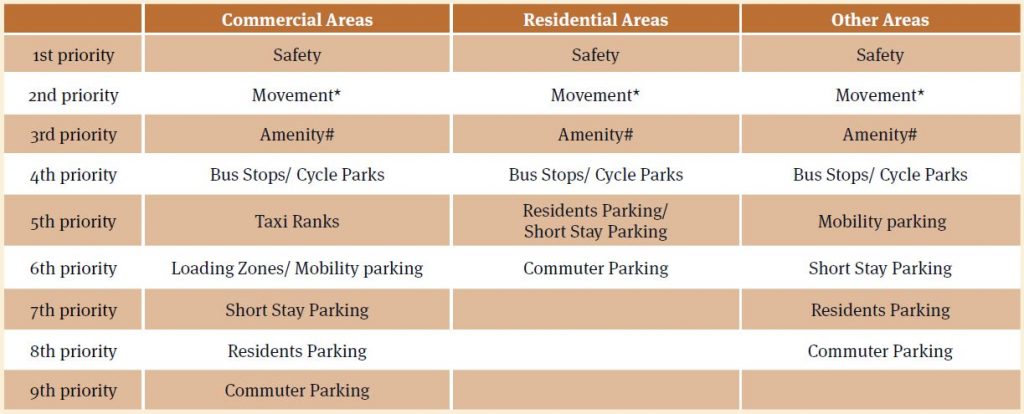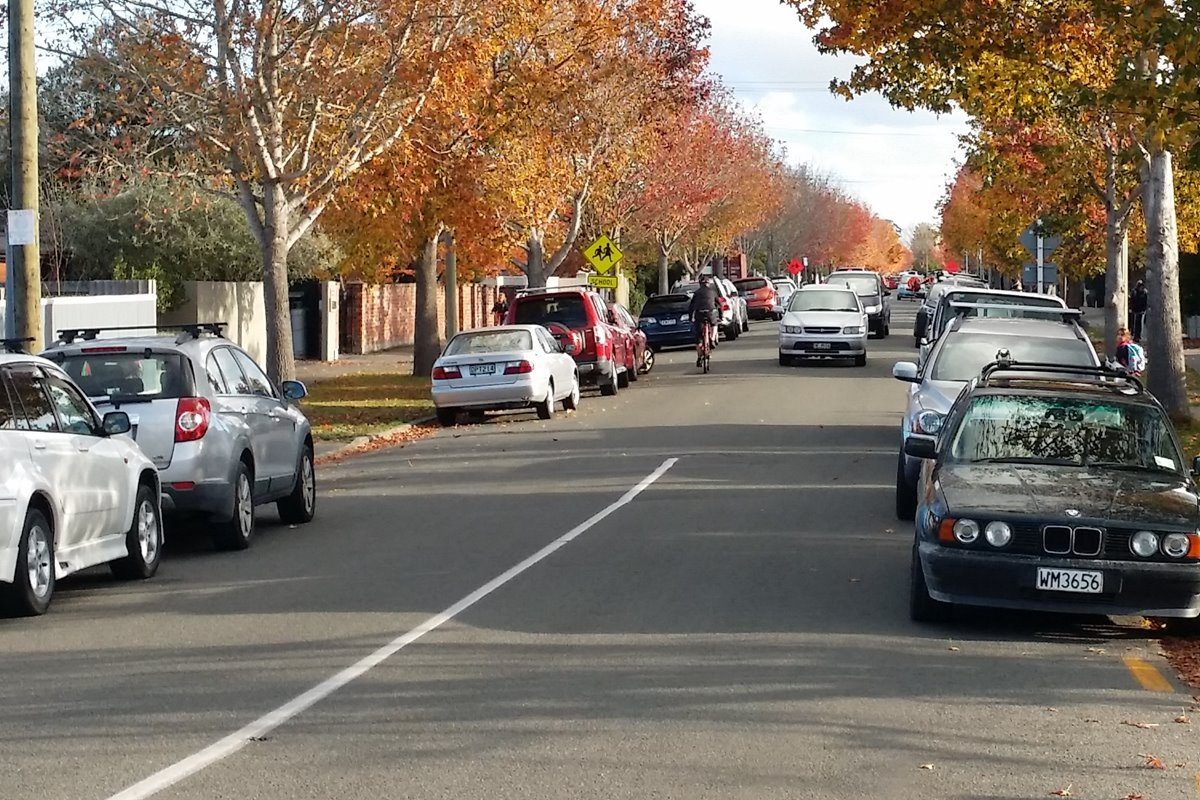It seems to be the subject that you can’t get away from when talking about any development in town. The latest Metro Sports Facility plans pop up for example, and all I hear on social media is “where will we park?” (never mind that it clearly shows off-street parking areas, and three Major Cycleway routes and three high-frequency bus routes will run past it…). Meanwhile, Major Cycleways are proposed around town and the locals are worried about how much car parking is lost. Same with Ferry Road, Woolston; and Victoria Street; and around schools; and…

It does seem in particular that the post-quake reshuffle of people and their activities around the city is creating some definite hot spots for parking demand. With this in mind, the City Council is starting to develop a Suburban Car Parking Policy and has started the ball rolling with some consultation on a few key issues and options. The aim is to develop some consistent approaches for how they deal with parking outside of the central city (which already has a new parking plan). Many of these issues will also be very relevant to cycling, so it’s worth having a look.
The consultation features a relatively short “Issues and Options” document, and a series of multi-choice questions to answer (plus space for additional feedback). Probably less than 15 minutes of your time to have a look at it and provide the feedback (submit by this Thursday!). There is some useful background information to get you thinking about the pros and cons of different approaches.
So how is car parking relevant to biking? Here are a few ways that the right or wrong policy here can influence what happens with cycling:
- If the policy doesn’t put enough emphasis on safe movement of all travel modes, then poorly located parking will continue to be allowed to create an unsafe environment for biking past pinch-points (and creating those lovely dooring opportunities…).
- Well-designed separated cycle facilities typically need extra space that will require the removal of on-street parking in some locations; so policies need to support this.
- If there is too much car parking available (and with few restrictions on time or cost) then there will be little incentive to bike (or bus or walk) instead of just driving there. It also makes it harder for the central city (where those restrictions are more commonplace) to compete with the suburbs.
- Policies that make it easier to drive and park also lead of course to more traffic, putting extra strain on our roading network as well as a less pleasant environment for cycling, and delays to everyone, leading to calls for more expenditure and more space allocated to them, leading to…

Next, why is this document called a Suburban CAR Parking Policy? Where will bike parking be dealt with? (note that the Central City Parking Plan covers both) Other than “Park & Bike” (discussed below), the document is woefully bereft of discussion about how to improve bike parking around the suburbs (as we’ve alluded to before, it’s not that great in places). At the very least, the new strategy should develop a plan for increasing the stock of good-quality bike parking in suburban areas at popular destinations (not just “wheel-benders” with no fixing points for your frame). This should also include introducing on-street “bike corrals” (i.e. replacing 1-2 car parks with some bike stands) near popular places like cafes and restaurants/bars.

The draft document suggests some hierarchies for allocating space on different types of streets (although it seems to be mostly about arterial roads, rather than local ones where movement shouldn’t matter so much). The good news is that, in theory, safety, the movement of modes (including cycling), and cycle parking should all come before car parking in its many variants. We know however, that this has often not been the case in the past, so I wonder what policy levers and incentives they will use to try to make this the norm for future purposes.

The consultation discussion document says that parking “supports economic activity and development.” Apparently “a good supply of convenient, secure, well placed and easy to find parking will support economic recovery and the future prosperity of the city.” I would think that a supply of such heavenly parking would only encourage people to want to drive everywhere, which as we know imposes considerable economic costs to both the travellers and society overall. I do hope that the final Policy will strongly highlight the fact that replacing some car parking with cycleways and bike parking can bring about at least as much economic prosperity.
 An interesting discussion in the consultation document is the idea of “Park & Bike” facilities; i.e. you park your car some distance away from your final destination at a designated place and then bike the remaining distance. The designated locations could have secure storage for keeping your bike there, or you could hire a bike (perhaps they should be additional stations for an expanded Spark Bikes network?). It would also make sense for them to be located on key bus routes (for the “Park & Ride” crowd) and along Major Cycleway routes.
An interesting discussion in the consultation document is the idea of “Park & Bike” facilities; i.e. you park your car some distance away from your final destination at a designated place and then bike the remaining distance. The designated locations could have secure storage for keeping your bike there, or you could hire a bike (perhaps they should be additional stations for an expanded Spark Bikes network?). It would also make sense for them to be located on key bus routes (for the “Park & Ride” crowd) and along Major Cycleway routes.
It would be good if the final policy can make it quite clear that residents and owners do not have any claim or rights to the on-street parking immediately in front of their property. That includes places without off-street parking; this is one of the prices you pay for such a location; it’s really not the end of the world (my house doesn’t have on-street parking for about 50m either side; somehow our visitors still manage to get to us…). It would also be good if they could discredit the nonsense of shopping centres and other businesses discouraging staff from parking on-site so that more spaces are available for customers. Businesses are meant to provide enough parking both for visitors and employees.
If you want to have your say on these initial thoughts, you need to do so by 5pm Thu 15th Sep. Council will then use this feedback to develop their draft Suburban Parking Policy and put that out for consultation later.
How do you think suburban parking should be managed?


Done. Tried to balance advocating for parking for those with limited mobility versus restricting the idea of unlimited parking for everybody everywhere at ratepayers expense.
I also advocated for the creation of user pays off street parking and referred to the case of Alberto Paulon in Melbourne (https://blogs.crikey.com.au/theurbanist/2015/03/02/what-to-do-about-cyclists-getting-doored/, http://www.theage.com.au/victoria/sydney-road-cardooring-victim-alberto-paulons-fiance-says-he-was-at-his-happiest-in-melbourne-20150309-13zgoo.html) to argue for separated cyling options or safe on-road options outside the door zone.